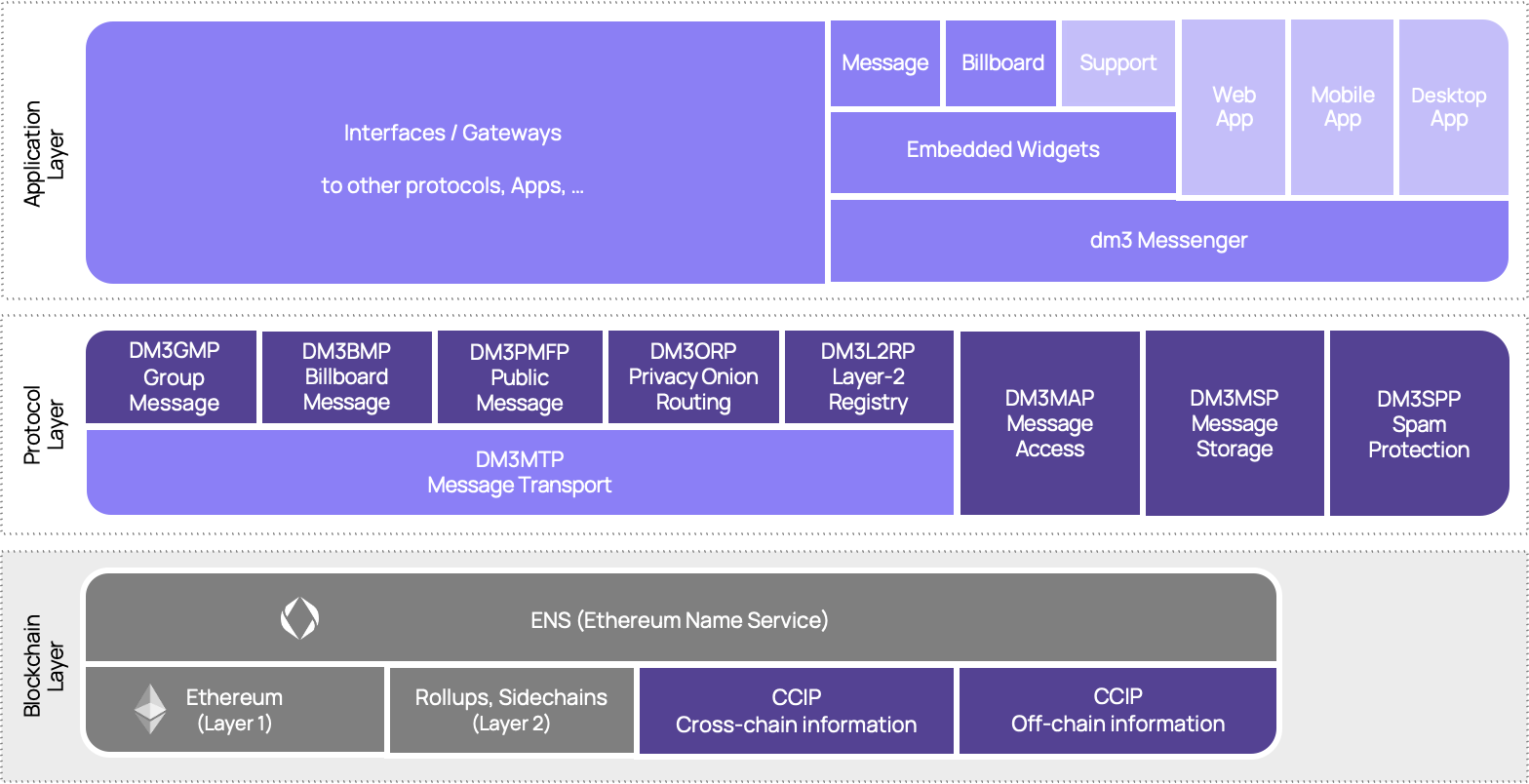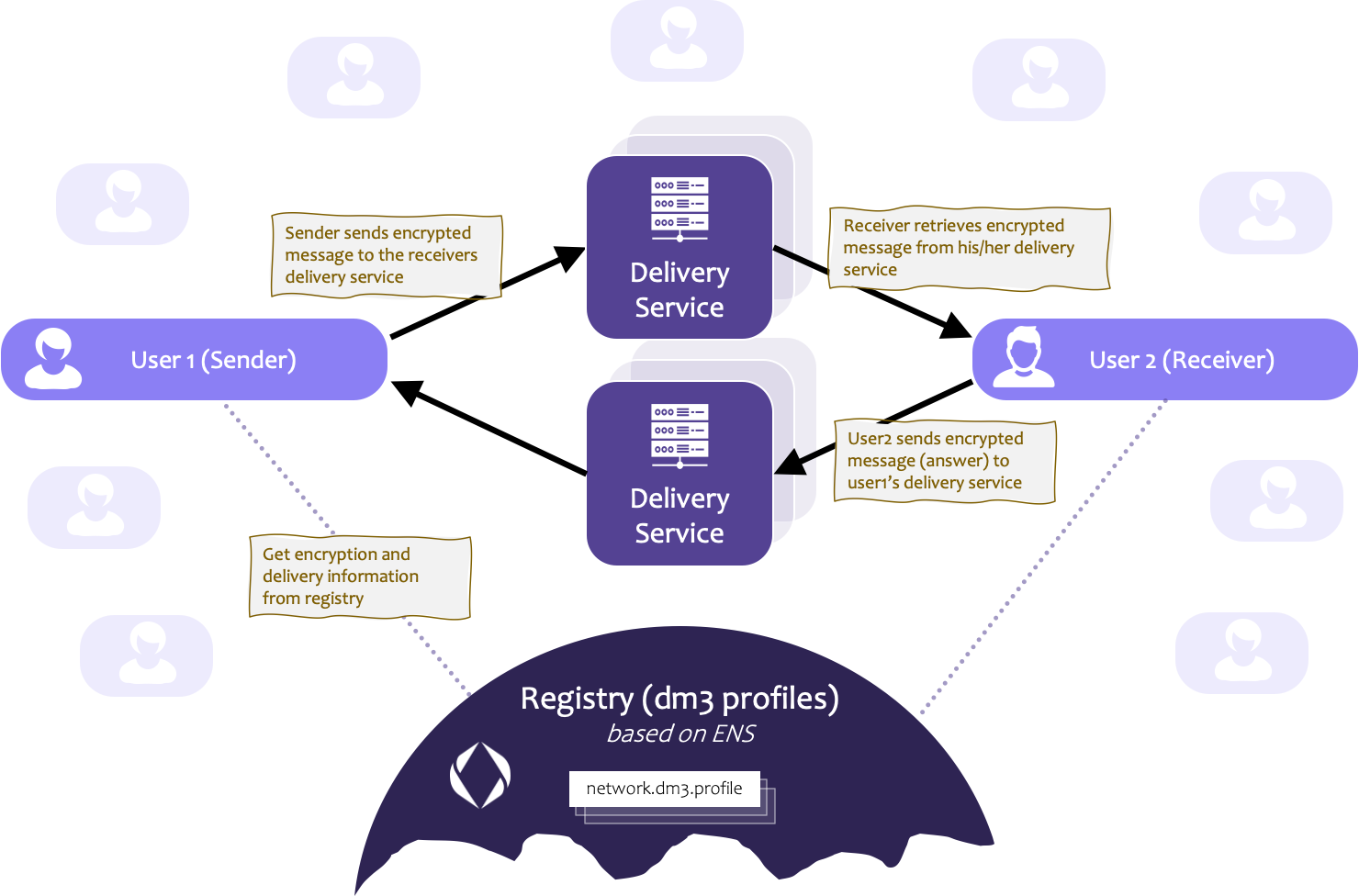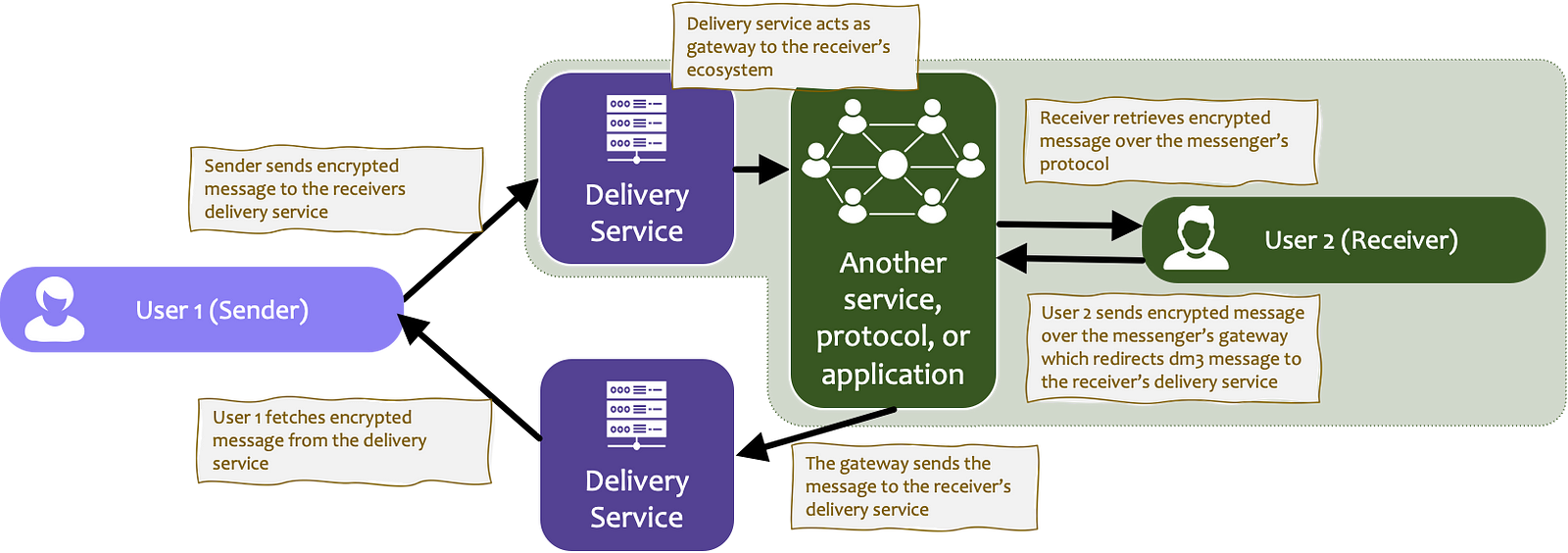In the digital world of today, messaging has become an essential application of the Internet. Whether it’s instant messaging platforms, social media applications, or enterprise communication tools, messaging provides us with a way to communicate and stay connected with others.
However, most messaging solutions available today are centralized services, meaning they operate as closed data silos controlled by a single entity. This centralized approach limits users to communicate only within the same environment and results in a lack of interoperability, making it nearly impossible for users to communicate with others using different platforms.
Moreover, the centralized nature of these messaging services often lacks transparency, making it difficult for users to verify the security and privacy of their data. This lack of transparency can lead to privacy violations, censorship, and manipulation, and can compromise the security of users’ personal information.
Consequently, the current messaging landscape is fragmented, and users are limited in their ability to interact freely and securely. Furthermore, privacy and security depend on a few large companies that provide these services, which can create conflicts of interest.
Messaging solutions based on web3 technology have recently emerged, offering secure communication and data exchange over the Internet. While these systems focus on security and privacy, interoperability between different messaging protocols and applications remains a challenge. Many of these systems are also closed ecosystems that are not designed to interoperate with other systems, creating barriers to communication and data exchange. As the web3 landscape continues to grow and evolve, improving interoperability and facilitating seamless communication between different systems will be critical.
The mission of the dm3 protocol is to facilitate cross-platform communication. How is this achieved? Well, let’s dig a little deeper:
Why interoperability matters
Diversity is important in distributed systems. In the case of messaging, there are different use cases that may require different technologies. Messengers may also be focused on a particular ecosystem and offer particular features that best suit the requirements of the users in that ecosystem. One single solution does not fit all. But with multiple applications, it is even more essential that users can choose the one that best meets their preferences, while remaining able to communicate with others even if other messengers are being used.
Interoperability is crucial in web3 messaging, where diversity and different use cases require different technologies. Users should be free to choose the tool that best suits their needs, while still being able to communicate with others, even if they are using different messengers.
Unfortunately, unlike email, there is no common standard for messenger applications to enable cross-application messaging. Because most messaging systems are closed ecosystems, it is impossible to send messages across applications. However, the long-term success of messenger applications will depend on interoperability as user demand and regulatory requirements grow.
In order for the variety of messaging solutions and applications to be well adapted to user needs, it is essential to enable the exchange of messages between services or protocols. This is particularly important for web3 messaging applications, which often serve a relatively limited user community.
Interoperability could be achieved by agreeing on a single base protocol, but this would require extensive changes to existing applications and services, which may conflict with specific security and privacy features of these applications. Instead, a layer-0 protocol that connects ecosystems without compromising security or privacy is a better approach to interoperability, which is the dm3 approach.
The dm3 protocol
The dm3 protocol is a messaging protocol using web3 technology. The lean base protocol (DM3MTP — the dm3 message transport protocol) is designed to provide a foundation layer for secure communication and interoperability between different messaging services and protocols.
The protocol is built on two main foundations:
- a central registry based on the Ethereum Name Service (ENS) that contains public keys for encryption and signature validation as well as message delivery information, and
- independent, self-sovereign delivery service nodes that act as relays for messages and gateways to other services or protocols.
The protocol’s modular architecture allows the addition of optional features such as enhanced privacy, group chats, public feeds, billboard chats, spam protection, notifications, and storage as needed.
Overall, the dm3 protocol providea a secure and flexible messaging ecosystem that can be easily extended and integrated with other services or protocols.

The architecture of the dm3 protocol
The dm3 registry
The dm3 registry serves as a central repository for public keys used for encryption and signature verification, as well as information about how and where messages should be transmitted. This registry must be decentralized and not controlled by a single entity or tied to a single technology.
To meet this need for decentralization, the dm3 protocol is built on top of the Ethereum Name Service (ENS), which provides a decentralized naming system for domains and subdomains. Users can register their own name or subdomain, which can serve as an identity for many applications.
The resolver of an ENS name or subdomain can manage the information on-chain, but through Chainlink’s Cross-Chain Interoperability Protocol (CCIP), information from off-chain sources such as Layer-2s, other chains or cloud services can be easily integrated and made verifiable on-chain.
As a result, any user can publish their own dm3 profile in the registry, and dm3-compatible services can also integrate their existing registries. This provides a flexible and extensible architecture for the dm3 protocol, allowing dm3 compatible application to access this information.
The delivery service
Important components of the dm3 protocol that allows users to receive and distribute messages securely and privately are delivery service nodes. These nodes provide an API that allows users to receive and cache their messages until they’re ready to be retrieved by the client. Users can either run their own delivery service or use one of the available services.
To ensure maximum reliability and accessibility, users can also connect to multiple delivery services simultaneously. This helps prevent any single point of failure that could disrupt communications. It also helps prevent censorship, ensuring that users can communicate freely without interference.

Communication scheme of the dm3 protocol
The dm3 protocol is designed to be interoperable with other services and protocols, and a delivery service can act as a gateway to these external systems. This means that the delivery service can receive messages and forward them to another protocol or service, allowing users to communicate seamlessly across different systems.
When a message is sent using the dm3 protocol, it can be delivered directly to the recipient’s delivery service, or it can be routed through the gateway delivery service of the sending application. This makes it easy to integrate other services or protocols without having to change the internal architecture of the underlying protocol.
 Delivery Service as a gateway to another service, protocol, or app
Delivery Service as a gateway to another service, protocol, or app
One of the key features of the dm3 protocol is its end-to-end encryption, which ensures that messages can only be read by the intended recipient. The delivery service as a gateway cannot read or modify the content of the message, as it is encrypted in a special envelope which only the recipient’s client can decrypt.
Overall, the delivery service plays a critical role in the dm3 protocol, allowing users to send and receive messages securely, privately, and across multiple systems. By acting as a gateway to other services and protocols, the dm3 protocol can seamlessly integrate with a wide range of other systems without compromising security or privacy.
Conclusion
The dm3 protocol provides a powerful solution for achieving interoperability and secure messaging across multiple systems. Its delivery service and gateway capabilities allow seamless integration with existing services and protocols, while end-to-end encryption ensures that messages are secure and confidential.
This makes the dm3 protocol an ideal solution for web3 messaging as well as for existing web2 messaging services to become interoperable without the need to change essential parts of their system. Its flexibility and adaptability allow for easy integration with a wide range of systems without compromising security or privacy.
Overall, the dm3 protocol represents an important step forward in the world of messaging, offering users greater choice and empowerment in selecting the messaging solution that best suits their needs, while ensuring that their messages remain secure and confidential.
The dm3 protocol is a public good and can be freely integrated into any existing protocol, service, or application. The mission of dm3 is not to replace but to connect!
Learn more about the dm3 protocol and connect with us on Twitter, Mastodon, or LinkedIn and join our community on Common Ground to stay updated on the latest developments. If you’re interested in integrating dm3 into your messaging application, don’t hesitate to schedule a call with us!




